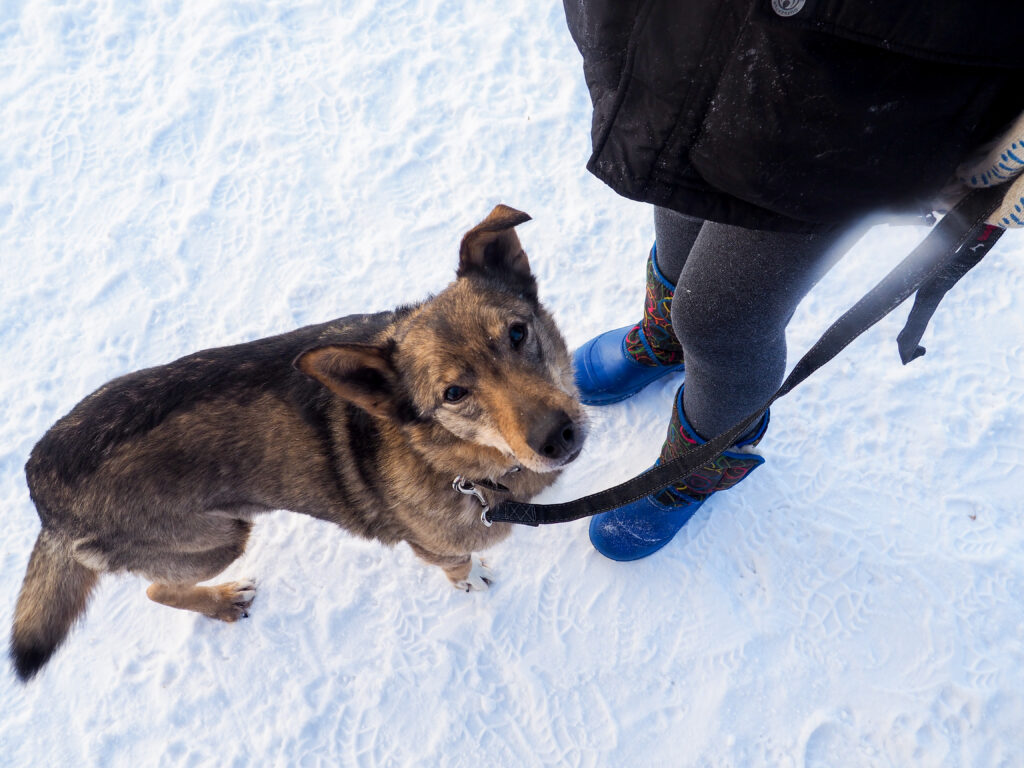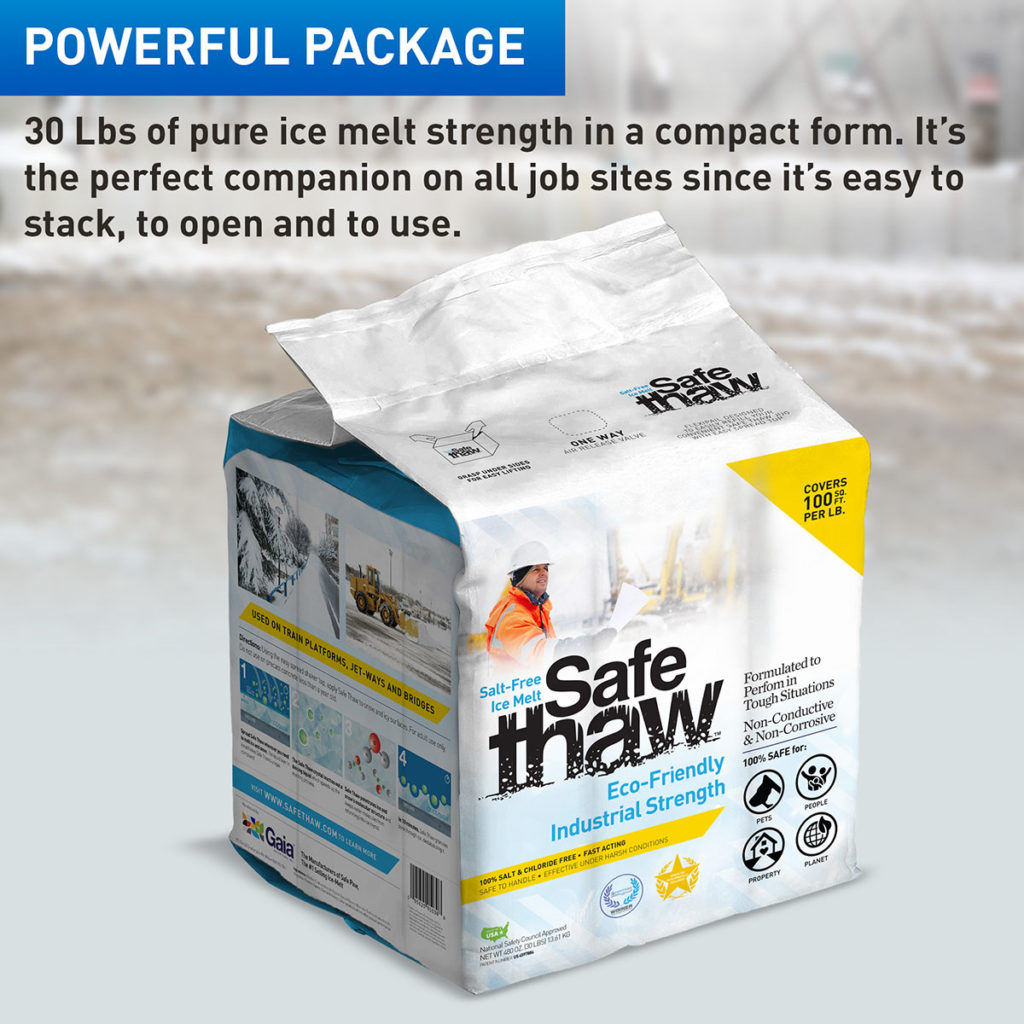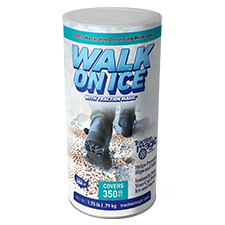Is Salt Bad For Dogs? An Exploration Of Pet-Safe Winter Solutions

Navigating winter can be challenging for dog owners, not least because of the widespread use of de-icing agents. The age-old question, “Is salt bad for dogs?” has been asked by countless pet parents, and with good reason.
In short, yes, salt is bad for dogs in excessive amounts. It can lead to salt poisoning in dogs, causing severe symptoms like vomiting, diarrhea, seizures, and even life-threatening.
This blog post delves into how salt affects dogs and suggests pet-safe winter solutions to protect them. We also talk about what to do if your dog exposes to salt.
The intent is to provide you with reliable and insightful knowledge to help make this winter safer for your beloved pet.

Safe Thaw
Safe Thaw was created as the ice management solution for tough winter environments. Ideal in commercial and industrial properties, shops, government agencies, bridges, and construction.
Is Salt Bad For Dogs?
Yes, salt can be harmful to dogs if consumed in large quantities. Excessive salt intake can lead to dehydration, electrolyte imbalances, and kidney problems. It can also cause vomiting, diarrhea, excessive thirst, and lethargy.
Additionally, the salt used on roads and sidewalks during winter can irritate a dog’s paws, leading to discomfort and potential injury. Monitor your dog’s salt intake and prevent them from consuming excessive amounts.
After walks on salted surfaces, it’s advisable to clean your dog’s paws to remove any salt residue and prevent further issues.
How Does Salt Affect Dogs’ Overall Health During Winter?
Understanding how salt affects dogs’ health during winter can help us protect our furry companions from unnecessary harm.
Dehydration And Salt
The ingestion of excessive salt can lead to dehydration in dogs. This is because their bodies attempt to flush out the excess sodium through increased urination, which can dehydrate them. During winter, this could be aggravated as dogs often drink less water due to the cold weather.
Skin And Paw Irritation
Contact with salt can cause skin and paw irritation in dogs. Winter conditions exacerbate this, as the cold air can cause their skin to dry and crack, making it more susceptible to irritation. When dogs walk on salted roads or sidewalks, it can lead to painful sores and infections.
Digestive Issues
Consuming large amounts of salt can upset a dog’s stomach, leading to vomiting or diarrhea. They can ingest the salt if they lick their paws after walking on a salted surface. This might result in discomfort and digestive problems, particularly during the winter when salt usage is high.
Neurological Problems
In severe cases, excessive salt intake can cause neurological problems like confusion, seizures, and even coma in dogs. This is due to salt’s impact on the brain’s function, which is particularly dangerous when coupled with the stress of cold winter temperatures.
Heart And Kidney Damage
Long-term exposure to excessive salt can cause serious health problems such as heart and kidney damage. These risks are escalated during winter when dogs might come into contact with or ingest more salt due to the de-icing of roads and sidewalks.
What Are The Symptoms Of Salt Poisoning In Dogs?
Salt poisoning, or sodium ion poisoning, is a severe condition in dogs that can arise from ingesting large amounts of salt. Knowing the symptoms is crucial for early detection and timely treatment. Let’s explore the common signs in detail.
- Excessive Thirst and Urination: One of the earliest indicators of salt poisoning in dogs is a sudden increase in thirst, accompanied by frequent urination. Dogs with salt poisoning try to eliminate the excess sodium by consuming more water and urinating.
- Loss of Appetite and Vomiting: A dog suffering from salt poisoning may lose its appetite and start vomiting. This happens because excess sodium can disturb the stomach’s balance, leading to nausea and refusal to eat.
- Neurological Abnormalities: As the condition progresses, the dog may exhibit signs of neurological issues such as seizures and disorientation. In severe cases, these symptoms may escalate into tremors or convulsions.
- Weakness and Lethargy: Excessive salt can dehydrate a dog, leading to weakness and lethargy. This might make the dog unwilling to move, play, or even get up.
- Swelling and Pain: In extreme cases, salt poisoning can lead to edema or swelling in the body. The dog might show discomfort and pain, particularly in the abdominal area.
How To Create A Dog-Friendly Winter Environment Without Using Salt?
Creating a dog-friendly winter environment can be achieved without using salt. Instead, consider using alternatives like Safe Thaw. This product is both non-toxic and safe for pets and humans. It is also environmentally friendly, ensuring a safe winter experience for all.
Additionally, you can enhance the dog-friendly environment by clearing snow and ice from walkways, providing a clear path for your furry friend. Use pet-friendly de-icing materials or sand to improve traction on slippery surfaces. Insulate outdoor dog houses with blankets or straws to keep them warm and cozy.
Consider using dog-friendly antifreeze if needed, as traditional antifreeze is toxic. Provide your dog with appropriate winter gear, such as booties and a warm coat, to protect its paws and body from the cold.
Limit your dog’s time outdoors during extremely cold weather and monitor them closely for signs of discomfort or frostbite. With these steps, you can create a safe and enjoyable winter environment for your beloved canine companion.
How To Clean Your Dog’s Paws After Exposure To Salt?
After your dog has been exposed to salt, clean their paws thoroughly to prevent irritation and discomfort. Here are some simple steps to help you clean your dog’s paws effectively and safely.
- Prepare a warm water bath: Fill a basin or shallow tub with warm water, ensuring it’s not too hot or cold. The temperature should be comfortable for your dog’s paws.
- Soak the paws: Gently place your dog’s paws into the warm water and allow them to soak for a few minutes. This will help soften any salt residue and make it easier to clean.
- Use a mild dog shampoo: Apply a small amount of mild dog shampoo to a soft cloth or sponge and lather it up. Gently scrub your dog’s paws, focusing on the areas that came into contact with the salt.
- Rinse thoroughly: Once you’ve cleaned the paws, rinse them with warm water. Make sure to remove all the shampoo residue to prevent any irritation.
- Dry the paws: Use a soft towel to dry your dog’s paws thoroughly. Pay attention to the spaces between the toes, ensuring they are completely dry to prevent moisture-related issues.
100% salt & chloride-free, fast acting Ice Management Solution
Conclusion
So, you now know, “Is salt bad for dogs” after reading the discussion above. While salt can be harmful to dogs, there are pet-safe winter solutions available to protect their paws and overall well-being. One such solution is Safe Thaw, a non-corrosive and non-conductive ice melt solution.
You can ensure your dog’s safety without compromising health using Safe Thaw instead of salt. Remember to clean your dog’s paws after exposure to salt or any ice melt product.
Regular paw maintenance and protective booties can also provide an extra layer of defense. Prioritizing your dog’s safety during winter is crucial, and with pet-safe alternatives like Safe Thaw, you can keep your furry friend happy, healthy, and free from the dangers of salt.
Try Also Our Other Winter Safety Products:
Safe Paw
The Original and #1 Selling Pet and Child Safe Ice Melt for over 20 years. Guaranteed environmentally safe –It won’t harm animals or children, and it won’t damage your property. That’s Safe Paw. Safe Paw can change how winter affects our planet.

Walk On Ice
The handy disposable canister can be taken everywhere, with the same 100% naturally occurring minerals that provide instant traction on ice or snow. Use it on sidewalks, steps, or as an instant traction agent for your car.



